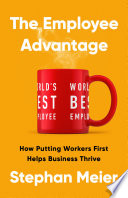

Employee engagement is a critical factor for organizational success. Engaged employees are more productive, more loyal, and more likely to contribute positively to the workplace culture. The book emphasizes that organizations should prioritize engagement strategies that resonate with employees. This includes understanding their needs, providing opportunities for growth, and fostering a sense of belonging. Engaged employees are not just satisfied; they are emotionally invested in their work, which translates into better performance and lower turnover rates.
Continue readingLeadership plays a pivotal role in creating an environment where employees feel valued and empowered. The book discusses various leadership styles and their impact on employee morale and productivity. Effective leaders are those who communicate openly, set clear expectations, and recognize employee contributions. The text highlights the importance of transformational leadership, which inspires and motivates employees to exceed their own expectations and contribute to the organization's vision.
Continue readingThe modern workplace is increasingly recognizing the importance of work-life balance. The book outlines how organizations that promote a healthy balance between work and personal life tend to have happier, more productive employees. This balance can be achieved through flexible working arrangements, mental health support, and promoting a culture that respects personal time. When employees feel their personal lives are valued, they are more likely to be engaged and committed to their work.
Continue readingContinuous learning and development are essential for employee satisfaction and retention. The book advocates for organizations to invest in training and development programs that help employees enhance their skills and advance their careers. This investment not only benefits the employees but also the organization, as it leads to a more skilled workforce that can adapt to changing market demands. The text provides strategies for creating effective development programs that align with both employee aspirations and organizational goals.
Continue readingDiversity and inclusion are not just ethical imperatives; they are also strategic advantages for organizations. The book elaborates on how diverse teams bring different perspectives and ideas that drive innovation and problem-solving. It emphasizes the importance of creating an inclusive culture where all employees feel valued and heard. The text explores practical steps for fostering diversity, such as unbiased recruitment processes and creating employee resource groups that support underrepresented populations.
Continue readingRecognition and rewards are fundamental to motivating employees and enhancing engagement. The book highlights the various forms of recognition, from formal awards to simple thank-you notes, and discusses how tailored reward systems can lead to increased job satisfaction. It emphasizes the need for organizations to develop a culture of appreciation where employees feel their contributions are acknowledged. The text provides insights into creating effective recognition programs that resonate with employees’ values and preferences.
Continue readingTechnology is reshaping the employee experience in profound ways. The book discusses how organizations can leverage technology to improve communication, collaboration, and overall employee satisfaction. Tools like project management software, communication platforms, and employee engagement apps can enhance connectivity and streamline processes. However, the text also warns against over-reliance on technology, stressing the importance of maintaining human connections in the workplace.
Continue reading